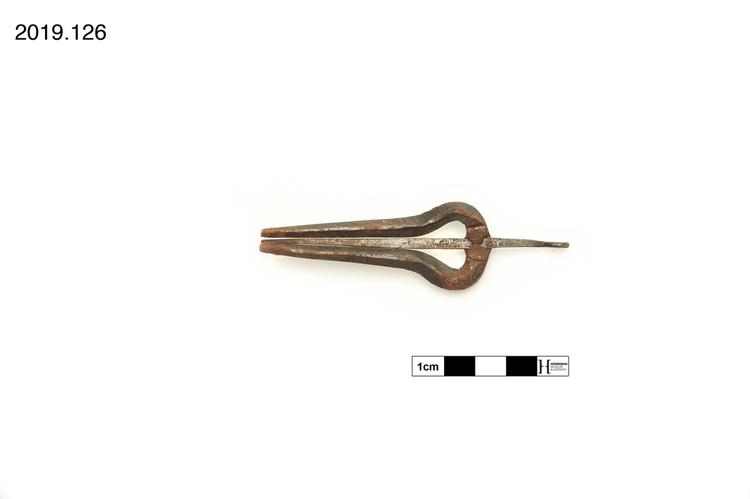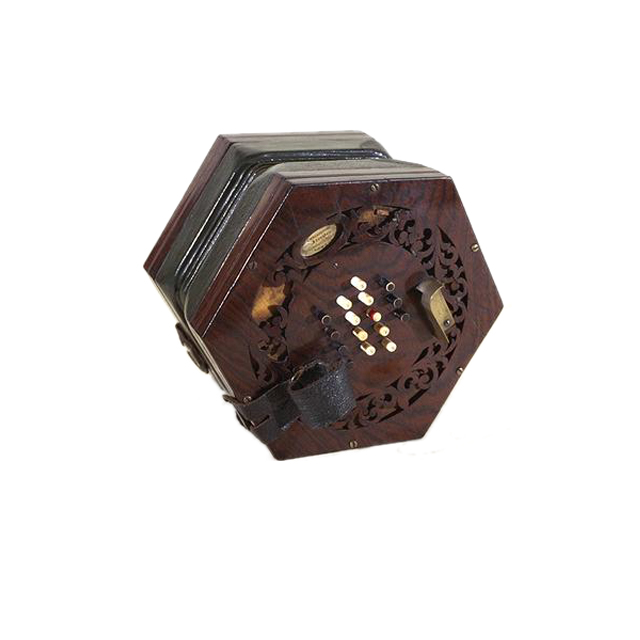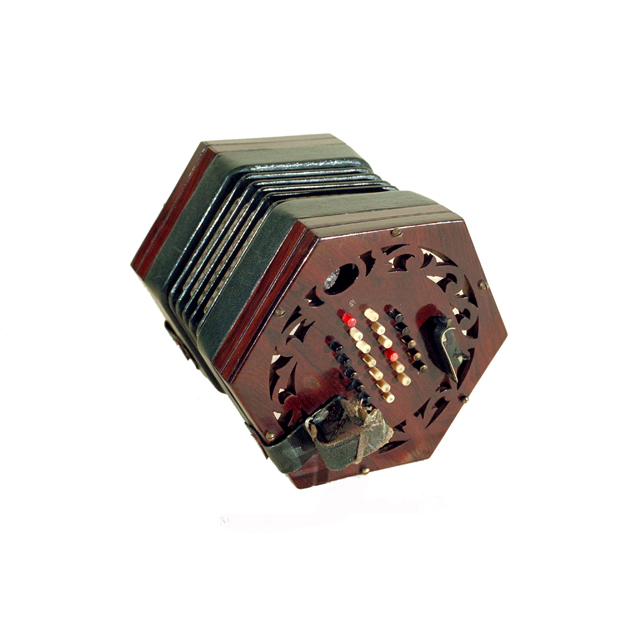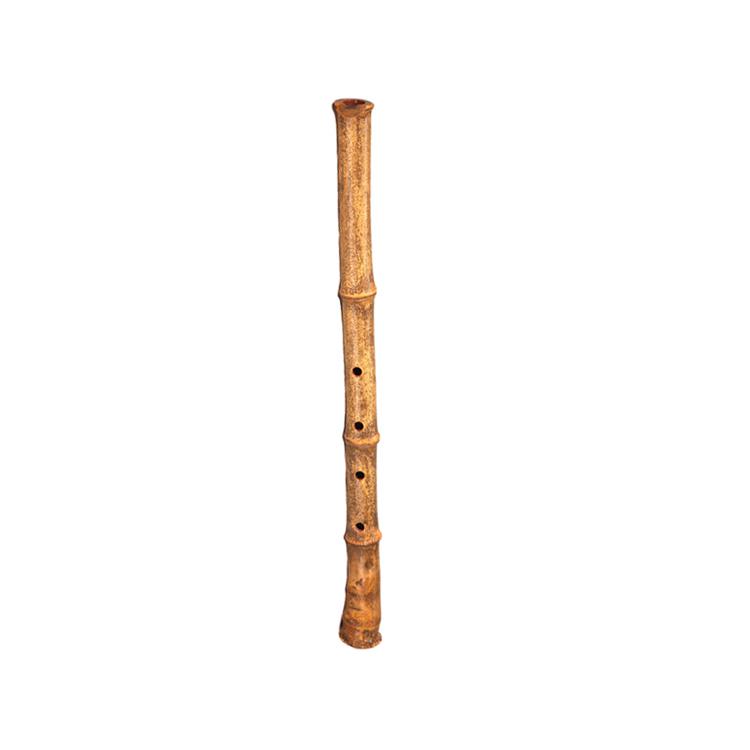
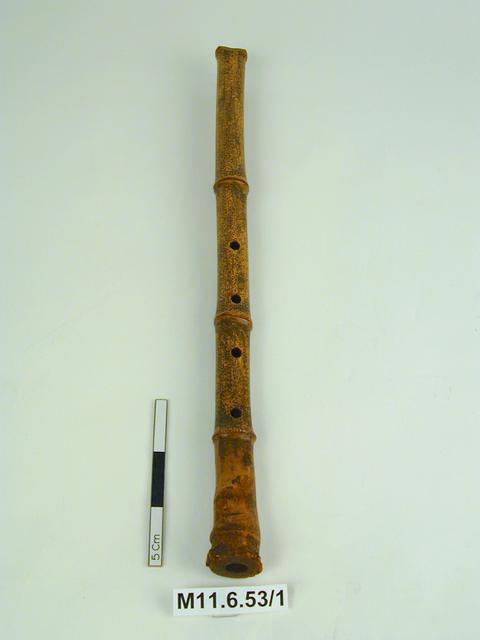
Shakuhachi, notch flute. Made from a single piece of bamboo with five nodes. The bottom node is from the very bottom of the plant, and the smoothed off stumps of the small lateral roots are visible round the rim. Similar also visible on next node up. The bottom section of the instrument has been bent forwards. The curve is limited to the length between the bottom two nodes. Four roughly equidistant circular fingerholes on the front, two each between the 2nd and 3rd, and the 3rd and 4th nodes. A slightly smaller thumbhole on tjr back approx. 35 mm below the 2nd node (and above the top fingerhole). Top end is open, notch at front depth approx 5 mm. Inside of bore painted red. Diamter of fingerholes: appriox 10 mm. Bore at top end appox. 21 mm wide and 20 'high' (front to back). Bore at bottom: 16mm.
The shakuhachi is an end-blown flute used in many genres of traditional music in Japan. The instrument originated in China but its history in Japan goes back at least as far as the 8th century. The emergence of the modern shakuhachi is associated with the Fuke sect in the 18th century. This was a group of unemployed ex-samurai who obtained official permission to use the shakuhachi in begging for alms as part of an ascetic lifestyle of religious devotion. The instrument retains religious connotations, even after laws introduced in the 1870s banned its use for religious purposes and outlawed the Fuke sect.




